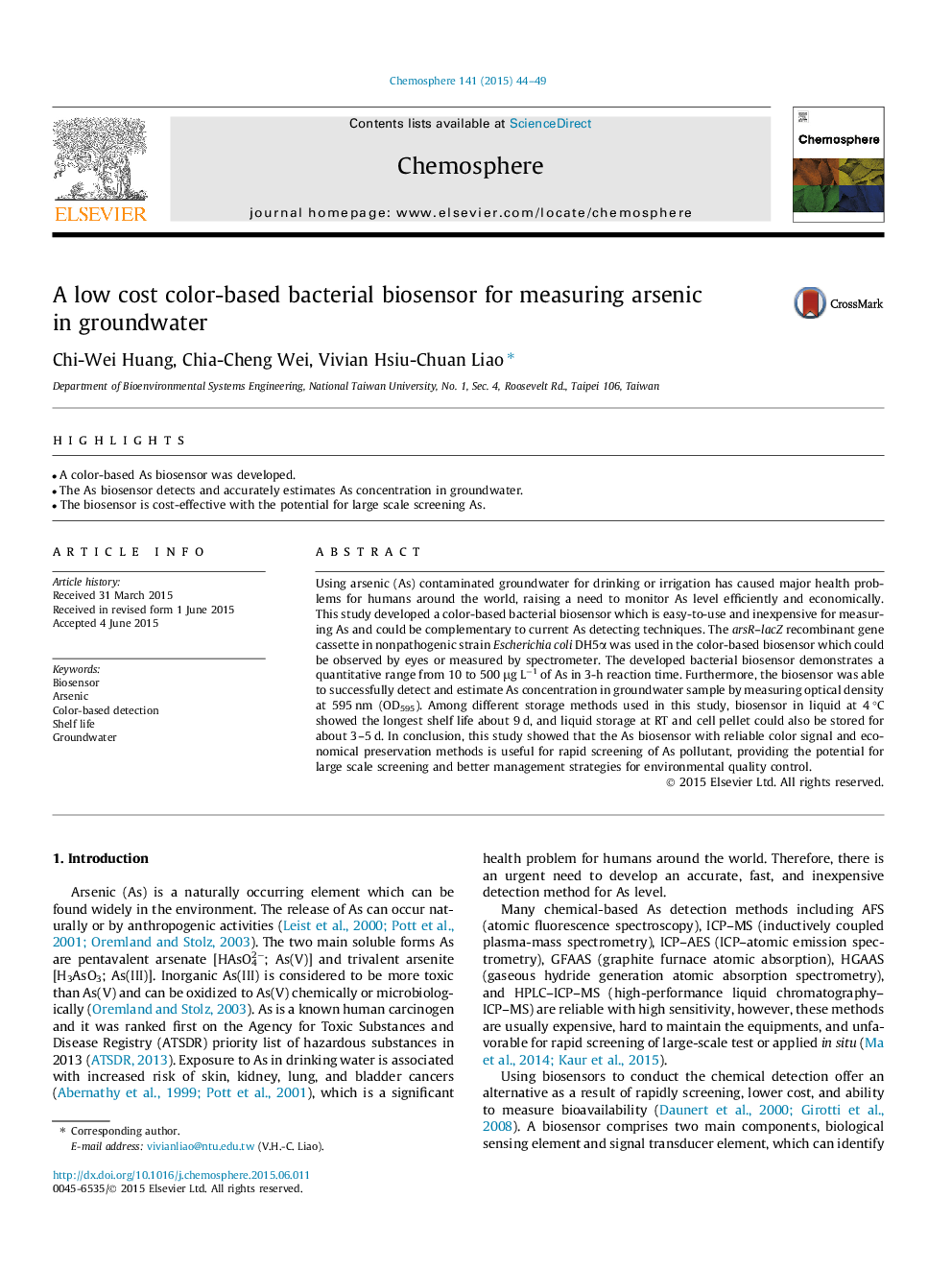| Article ID | Journal | Published Year | Pages | File Type |
|---|---|---|---|---|
| 6307330 | Chemosphere | 2015 | 6 Pages |
Abstract
Using arsenic (As) contaminated groundwater for drinking or irrigation has caused major health problems for humans around the world, raising a need to monitor As level efficiently and economically. This study developed a color-based bacterial biosensor which is easy-to-use and inexpensive for measuring As and could be complementary to current As detecting techniques. The arsR-lacZ recombinant gene cassette in nonpathogenic strain Escherichia coli DH5α was used in the color-based biosensor which could be observed by eyes or measured by spectrometer. The developed bacterial biosensor demonstrates a quantitative range from 10 to 500 μg Lâ1 of As in 3-h reaction time. Furthermore, the biosensor was able to successfully detect and estimate As concentration in groundwater sample by measuring optical density at 595 nm (OD595). Among different storage methods used in this study, biosensor in liquid at 4 °C showed the longest shelf life about 9 d, and liquid storage at RT and cell pellet could also be stored for about 3-5 d. In conclusion, this study showed that the As biosensor with reliable color signal and economical preservation methods is useful for rapid screening of As pollutant, providing the potential for large scale screening and better management strategies for environmental quality control.
Related Topics
Life Sciences
Environmental Science
Environmental Chemistry
Authors
Chi-Wei Huang, Chia-Cheng Wei, Vivian Hsiu-Chuan Liao,
